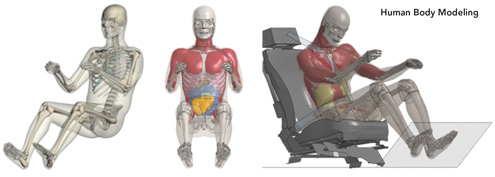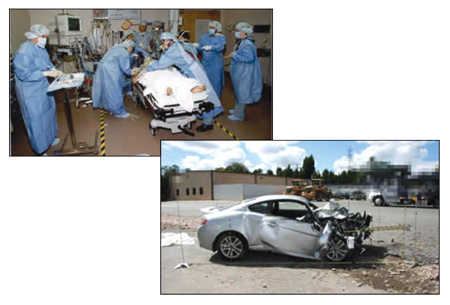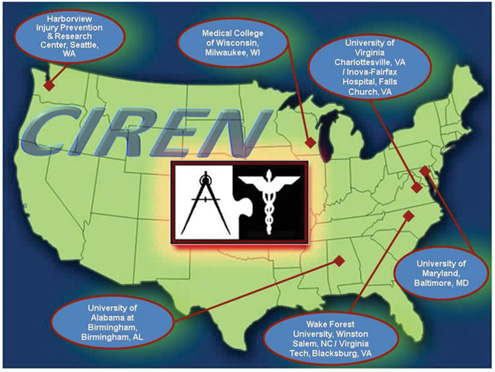
WASHINGTON - Preliminary data released today by the U.S. Department of Transportation's National Highway Traffic Safety Administration show a 7.7 percent increase in motor vehicle traffic deaths in 2015. An estimated 35,200 people died in 2015, up from the 32,675 reported fatalities in 2014.
"Every American should be able to drive, ride or walk to their destination safely, every time," said U.S. Transportation Secretary Anthony Foxx. "We are analyzing the data to determine what factors contributed to the increase in fatalities and at the same time, we are aggressively testing new safety technologies, new ways to improve driver behavior, and new ways to analyze the data we have, as we work with the entire road safety community to take this challenge head on."
Although the data are preliminary and requires additional analysis, the early NHTSA estimate shows 9 out of 10 regions within the United States had increased traffic deaths in 2015. The most significant increases came for pedestrians and bicyclists.
"As the economy has improved and gas prices have fallen, more Americans are driving more miles," said NHTSA Administrator Dr. Mark Rosekind. "But that only explains part of the increase. Ninety-four percent of crashes can be tied back to a human choice or error. We know we need to focus our efforts on improving human behavior while promoting vehicle technology that not only protects people in crashes, but helps prevent crashes in the first place."
In response to early estimates showing fatality increases, the agency convened a series of six regional safety summits with key stakeholders throughout February and March. As a result of those summits, the agency is working to develop new tools that could improve behavioral challenges. This includes drunk, drugged, distracted and drowsy driving; speeding; failure to use safety features such as seat belts and child seats; and new initiatives to protect vulnerable road users such as pedestrians and cyclists.
In addition, when the final data set is released later this summer, DOT and NHTSA will issue a call to action to safety partners, state and local elected officials, technologists, data scientists and policy experts to join the Department in searching for more definitive answers. We need to develop creative, open data driven solutions to improve safety and reduce deaths caused by motor vehicles.
The U.S. Department of Transportation is also pressing forward with new guidance to promote the development of automated safety technologies which could greatly decrease the number of crashes. NHTSA hosted two public meetings on automated safety technologies in advance of guidance that will be issued later this summer. NHTSA and FHWA are also working closely on the implementation of the new safety performance measures which require States and metropolitan areas to set targets for reducing deaths among motorized and non-motorized road users.
"The Memorial Day, July 4th and Labor holidays are historically three of the deadliest days on U.S. roadways. Americans should take extra care to ensure they get to their destinations safely," Foxx added. “Every driver should make sure all of their passengers are buckled up every time. No driver should get behind the wheel when he/she has been drinking."
In March 2016, the Department of Transportation announced a key safety agreement with automakers requiring more than 99 percent of new vehicles to have automatic emergency braking standard by 2022. This safety technology could prevent thousands of crashes every year.
The Department is working to require vehicle-to-vehicle communications systems on new vehicles, a technology which could help drivers avoid or mitigate 70 to 80 percent of vehicle crashes involving unimpaired drivers. DOT is also working with researchers on technologies that could prevent drunk driving which is responsible for close to
one-third of highway deaths.

Biomechanics & Trauma conducts cooperative and collaborative research with other organizations around the world to develop tools that help mitigate injury and death in motor vehicle crashes. Crash test dummies are developed and tested, and NHTSA's fleet of crash test dummies are maintained within this group.
Vulnerable Occupants
Many motor vehicle occupants are at increased risk of injury due to physical differences that affect their interaction with the vehicle interior and restraints, as well as their response and tolerance to crash loading.
Older occupants may sustain more severe injuries due to weaker bones and calcified tissues.
Occupant shape, which is associated with body mass index, can lead to suboptimal restraint fit.
Vulnerable occupant research seek to identify the unique challenges of protecting all motor vehicle occupants.
Many motor vehicle occupants are at increased risk of injury due to physical differences that affect their interaction with the vehicle interior and restraints as well as their response and tolerance to crash loading.
Older occupants may sustain more severe injuries due to weaker bones and calcified tissues.
Occupant shape, which is associated with body mass index, can lead to suboptimal restraint fit. Vulnerable occupant research is underway to identify the unique challenges of protecting all motor vehicle occupants:
Advanced Automatic Collision Notification (AACN) is a system that provides immediate notification of a motor vehicle crash, along with an estimate of the likelihood of severe injury based on vehicular data (e.g. Delta-V).
This system can improve the speed and accuracy of dispatch for motor vehicle crashes and can also help get the right patient to the right hospital by assisting EMS providers in determining which patients need the resources of a trauma center.

The Crash Injury Research and Engineering Network (CIREN) is a collaborative effort between NHTSA Human Injury Research, trauma physicians, and experts in the fields of impact biomechanics and mechanical engineering. This collaboration collects detailed data on crashes resulting in serious or disabling injury.
The CIREN process combines prospective data collection with professional multidisciplinary analysis of medical and engineering evidence to determine injury causation in every crash investigation conducted.
The mission of the CIREN is to improve the prevention, treatment, and rehabilitation of motor vehicle crash injuries to reduce deaths, disabilities, and human and economic costs.

Overview
The current CIREN model utilizes two types of centers, medical and engineering. Medical centers are based at level one trauma centers that admit large numbers of people injured in motor vehicle crashes. These teams are led by experienced trauma surgeons and emergency physicians. The teams will also include a trained crash investigator and project coordinator.
Engineering centers are based at academic engineering laboratories that have extensive experience in motor vehicle crash and human injury research. Engineering teams partner with trauma centers or emergency rooms to enroll crash victims into the CIREN program. Engineering teams are led by highly experienced mechanical engineers, typically trained in the area of biomechanics.
Engineering teams also include trauma/emergency physicians, a crash investigator and a project coordinator. Either type of team typically includes additional physicians and/or engineers, epidemiologists, nurses and other researchers.
According to the Centers for Disease Control and Prevention (CDC), traumatic brain injury (TBI) is an important public health problem in the United States. TBI is frequently referred to as the “silent epidemic” because the complications from TBI, such as changes affecting thinking, sensation, language, or emotions, may not be readily apparent.
The most recent CDC report (Frieden et. al, 2010) estimates 1.7 million people sustain a TBI annually, of them 52,000 die. The report finds that among all age groups, motor vehicle traffic (MVT) was the second leading cause of TBI (17.3%) and resulted in the largest percentage of TBI related deaths (31.8%).
